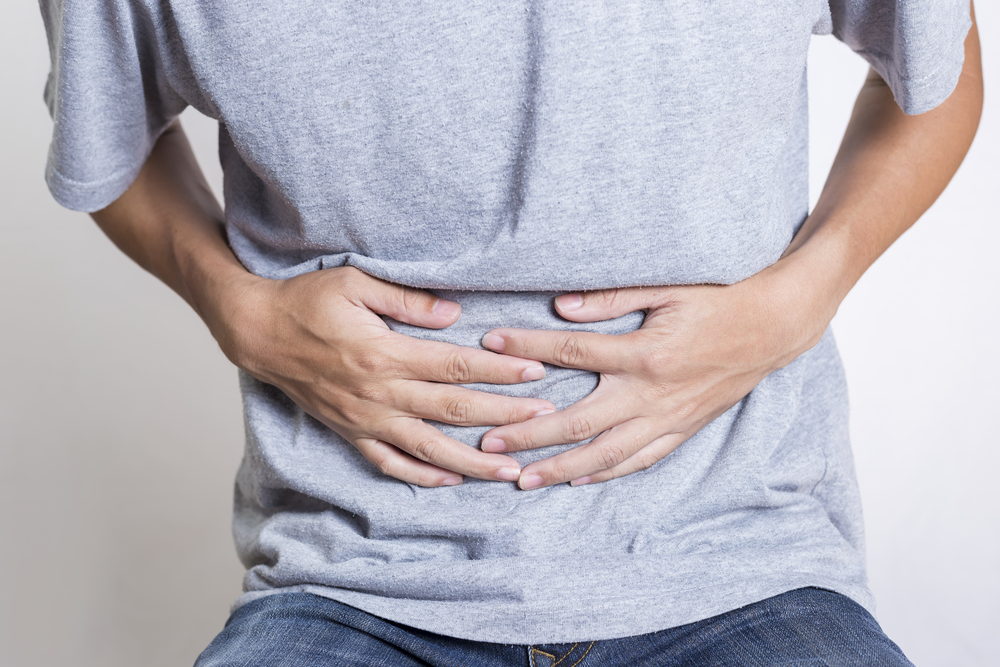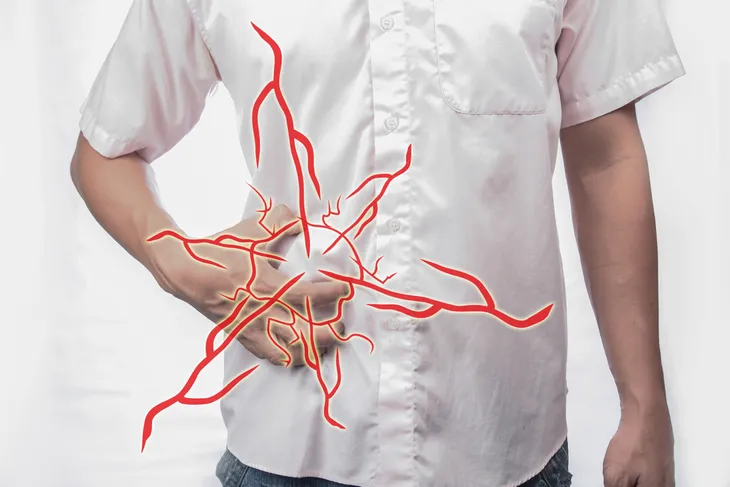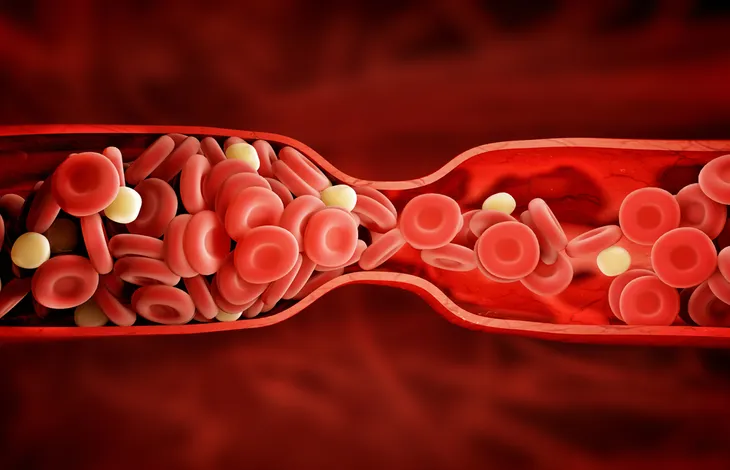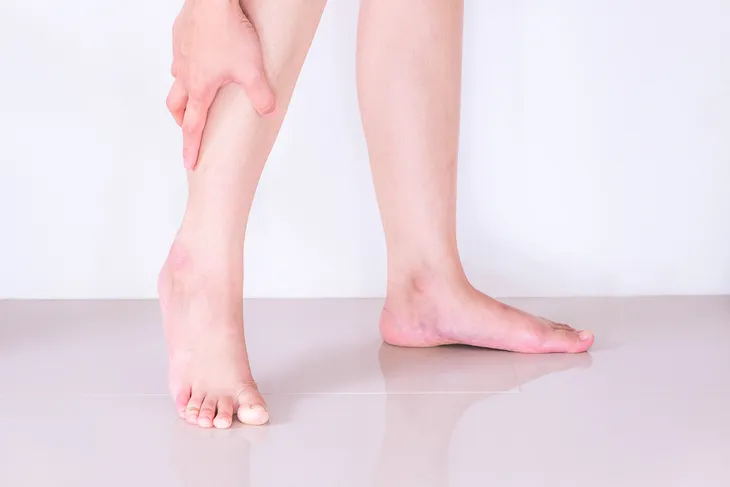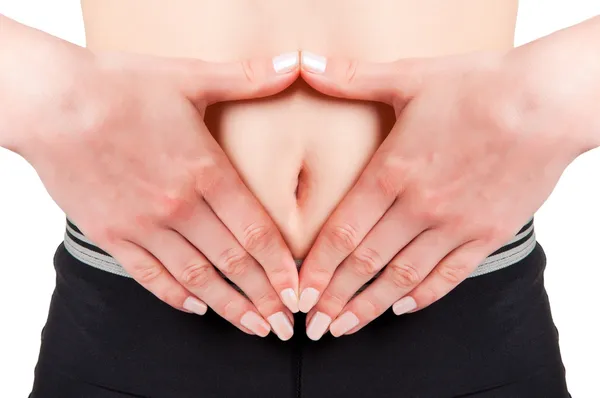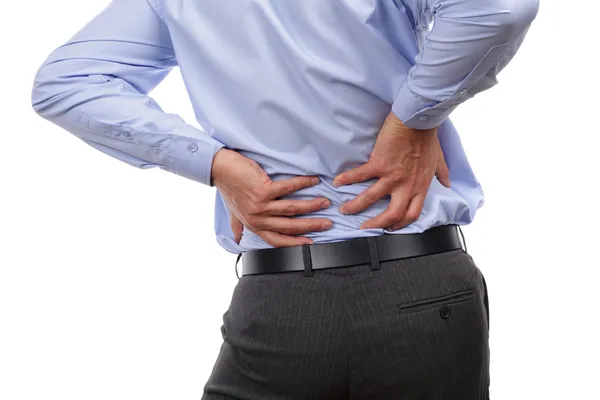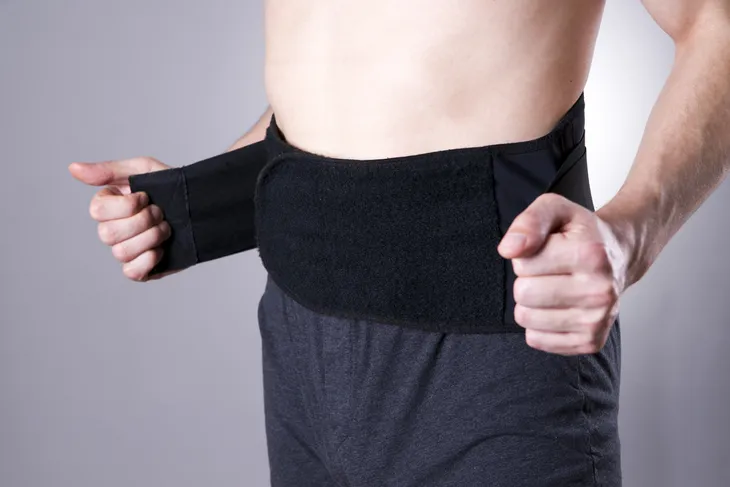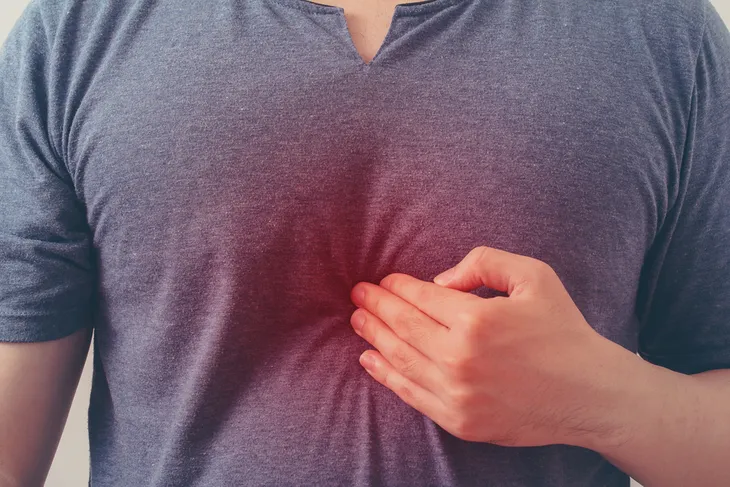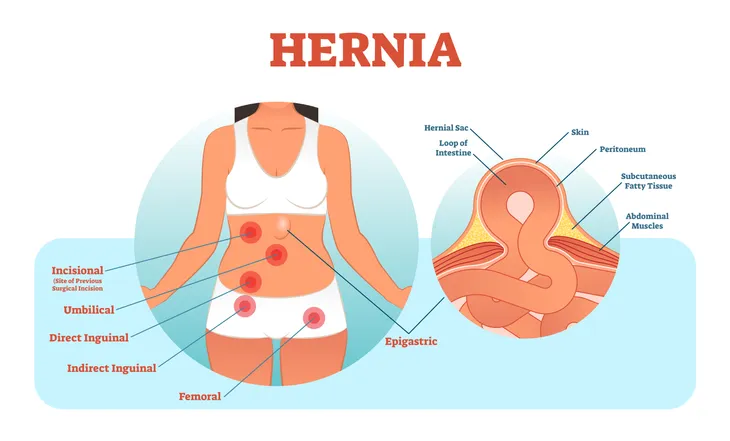A hernia can occur in any part of the body. However, the most common areas of the body affected are the inner groin (inguinal hernia), outer groin (femoral hernia) near the navel (umbilical hernia), upper abdomen (hiatal hernia), or at the site of a recent surgical scar (incisional hernia).
Hernias are lumps caused when a weakening of the muscle walls occur and fatty tissue squeezes through the connective tissue. They most typically form when an internal organ (usually the bowel or bladder) or part of the intestine pushes out through the surrounding muscle. Ranging from mild to extremely painful when exposed, hernias usually go away when you press on them or lie down, but they can be aggravated by coughing or sneezing. If they don’t dissipate on their own, you may require surgery to prevent them from worsening.
Here are 15 common signs and symptoms of a hernia…
1. Visible Lump
The first sign of a hernia is often a noticeable swelling under the skin, which will likely turn into a visible lump or bulge. This protrusion forms as a sac in the organs (most commonly the intestines) but sometimes also in the wall of the abdomen, groin, or navel. Untreated hernias become severe and very painful as the muscle widens and splits, and as more and more of the intestines or abdominal tissue is forced through the opening, forming an even larger sac.
This notable protrusion, or bulging sac, is one of the primary characteristics of a hernia and typically develops due to weakened tissue that’s present at birth or organ/tissue that wears down later in life. You may notice the bulge before you feel pain, but in many cases, patients feel pain before the protrusion is noticeable to the naked eye. It’s very important that you go to your doctor as soon as you notice a lump as it may signify another health issue, such as type of abnormal growth or a cancerous tumor.
2. Pain
Hernia pain can range from slightly uncomfortable to severely painful—particularly the longer you leave it untreated. Most times a new hernia will be painless. According to patient reports, hernia pain has diverse ranges. It can be no pain at all, just a visual protrusion (or bulging sac) in the area of the groin or navel, or a pressure-filled or heavy sensation in the abdomen. This pressure can be exacerbated when the patient bends over to pick up an object or from sheer pressure due to bending at the waist.
There could be pain or aching that gradually worsens with exerting movements, such as lifting, bending over to retrieve objects, carrying heavy objects, or sitting for long periods of time (i.e., at a desk or in a vehicle) can become excruciating. However, if the pain is severe, the hernia may be strangulated (which means that the blood supply is cut off). You can’t ignore a strangulated hernia as the pain will be so excruciating that you will require immediate medical attention.
3. A Full Feeling
A heavy, full, bloated, or uncomfortable feeling in the gut is common to those with umbilical or hiatal hernias in the abdominal area. Umbilical hernias are hernias that develop in the intestines and protrude via an opening in the layered abdominal muscles. Umbilical hernias are most typical in infants (roughly at age 1 to 3-years old) that are born with weak organ or abdominal tissues. However, these hernias can appear in adulthood as well. Hiatal hernias, on the other hand, result from sacs in the stomach that force tissue up through your diaphragm opening (known as the hiatus). Small hiatal hernias aren’t usually an issue; however, larger hiatal hernias can result in pain when food and acid back up into the esophagus, as the esophagus passes through the hiatus on route to the stomach.
A feeling characterized as a dragging sensation in your groin may be an inguinal hernia (which is a soft tissue hernia of the abdominal cavity or omentum, that presses through weakened abdominal muscles) or a femoral hernia (a sac in the groin and thigh made up of intestine forcing into the wall of the femoral canal). These hernias will hurt whenever you sit or bend over to pick up an object.
4. Stomach Upset
Tummy troubles—including difficulty digesting meals, heartburn, lingering digestive upset, nausea, and bowel issues such as constipation—may occur with hernias located in the groin or abdominal areas, such as an inguinal hernia, which bulges out of the groin near the lower abdomen and the thigh. Stomach upset can occur as an inguinal hernia slips in and out of the abdomen into the inguinal canal. A doctor can ease the feeling with a gentle massage that manipulates the hernia back into the abdomen.
If hernia becomes strangulated (or blood supply is cut off), you will experience nausea and vomiting and have difficulty passing gas and having a bowel movement. A strangulated hernia requires immediate emergency medical attention, as it is life-threatening to the patient.
5. Reduced Blood Supply
If a hernia grows in size and becomes “strangulated,” a term that refers to it growing so large that it gets stuck inside the weakened muscles walls, you will experience lack of blood supply in the primary area as well as throughout the body. If “strangulation” occurs, your life is in danger and you will require immediate emergency surgery.
According to doctors at the British Hernia Center at the Hospital of St. John and St. Elizabeth, “the risk of death is seven times higher when a hernia is removed by emergency surgery–20 times higher if the hernia surgery involves a bowel resection.” The medical recommendation is that a hernia is diagnosed and treated before it becomes strangulated to avoid emergency surgery at all costs.
6. Nerve Discomfort
With lingering hernia pain, you may experience discomfort in other regions of the body that are linked to the same nerve chain. This will occur when the hernia irritates the nerves, and pain travels along the nerve root. For instance, if an inguinal hernia (located in the inner groin) pushes on the surrounding nerves, it may cause tenderness in the legs, scrotum (for men), or the labia (for women).
Hernias that result from a sports injury (or athletics, such as hockey or soccer) can experience nerve compression if the bulge presses into an area of the nerve, resulting in a radiation of pain in one of the nerve dermatomes. For instance, a hernia in the lumbar disk of the back can often entrap nearby nerves. If a hernia is suspect and the patient is athletic, doctors will typically assume the presence of a sports hernia.
7. Vomiting
When a hernia starts to cause nausea and vomiting, this is a sign for concern. It typically relates to an organ, such as the intestine, becoming trapped, or “incarcerated,” outside the abdomen, which can cause a dangerous and fatal bowel obstruction known as an “incarcerated” hernia.
Incarcerated hernias require immediate and emergency surgery and may cause the inability to pass gas or a bowel movement. As previously mentioned, the rate of death is 20 times higher if emergency bowel resection surgery is performed. This is why most medical doctors will attempt to diagnose a hernia well before emergency surgery is required, according to claims by the British Hernia Center at the Hospital of St. John and St. Elizabeth.
8. Muscle Weakness
Similar to nerve pressure, localized hernias may also cause fatigue or pressure in the area of origin. For instance, an inguinal hernia of the inner groin will put pressure on the surrounding leg and groin muscles. When a hernia slips out of place, it will cause discomfort of varying degrees and should eventually be surgically repaired (unless another medical condition prevents surgery).
While awaiting surgery, patients may be given a surgical belt or a truss (an elasticized underwear garment) to wear in order to keep the bulge flat and from slipping in and out. You can also gently manipulate a hernia into place by lying down and massaging it gently back into the abdomen. If you can’t gently push it inwards, the hernia may be trapped in the abdominal wall and emergency surgery may be required.
9. Pain with Movement
You may not notice pain with movement initially, but a growing hernia will increase with pain when you make sudden movements—for instance should you cough, laugh, sneeze, or even bend down suddenly to lift an object, a hiatal hernia may slip out of place, forcing tissue outwards, and increase in size (or bulge) when pressure is placed on the abdomen.
Patients with hernias may also find sitting down for long periods of time very painful if the hernia originates in the abdomen. This means that driving long distances and sitting in a desk all day may cause the hernia to slip out of place and bulge outward. Bending at the waist at all may cause too much pressure and discomfort in the abdominal or groin area.
10. Difficulty with Daily Activities
Obviously, as the hernia grows and pain worsens, the quality of your daily life can become affected. For instance, pain may make common activities—such as work, playing or picking up children, social activities, exercise, and even sex—difficult and uncomfortable.
Again, pain can be minimized while awaiting hernia repair surgery by wearing a medical belt or a truss, which is a type of elastic underwear worn to keep a hernia in place and flat to prevent bulging. Painful bulges can also be gently massaged by a medical professional or by the patient. Simply, lie flat and gently manipulate the bulging sac back into the abdomen.
11. Fever
A fever should always be taken seriously, because it’s usually a sign that the body is working overtime to fight against an infection. Reader’s Digest lists fever as one of the potential symptoms of a hernia. “It could mean the herniated tissue is strangulated — it’s not getting any blood flow — and that’s a potentially life-threatening situation,” says the source.
It’s important to note that a fever on its own is not a sign of a hernia. It’s only when a fever is present in addition to several other symptoms on this list.
12. Heartburn
There are several different types of hernias, including inguinal hernia, hiatal hernia, umbilical hernia, and incisional hernia. Each of these common types of hernias occur in different areas of the body, so not surprisingly, they can present different symptoms. One of the symptoms of a hiatal hernia, which occurs in the upper abdomen, is heartburn or acid reflux.
“A piece of your stomach squeezes through weak tissue into your esophagus; escaped stomach acid can inflame the area. The result will be a burning sensation that feels remarkably like heartburn,” says Reader’s Digest.
13. Discomfort at the End of the Day
Since hernias are typically caused by strain on the body from being either pregnant, constipated, lifting heavy weights, obesity, etc., it’s not surprising that the pain is at its worst at the end of the day after the body is spent.
“Most patients, though, describe the main symptom as an awareness or a discomfort that may be worse at the end of the day, after they’ve been standing for a long time or straining a lot,” says Ann Hopkins, M.D., associate professor of surgery at NYU Langone Health to Women’s Health magazine.
14. No Symptoms at All
What’s more scarier than having a health issue is having one and not knowing because there aren’t any symptoms. This is most commonly the case with internal hernias. There might not be any signs on the outside of the body, but the patient will feel consistent pain.
According to Hopkins, hernias can be especially hard to diagnose in women because the lump is rather small so it goes unnoticed. But this can be extremely dangerous because if left untreated it can lead to other more serious health problems such as blockages and gangrene.
15. Difficulty Swallowing
In addition to heartburn and acid reflux, a hiatal hernia causes several other uncomfortable symptoms such as chest pain and difficulty swallowing. This is because of where the hernia is located.
According to Healthline, “a hiatal hernia occurs when part of your stomach protrudes up through the diaphragm into your chest cavity. The diaphragm is a sheet of muscle that helps you breathe by contracting and drawing air into the lungs.” Its job is to separate the organs in the abdomen from those in the chest, which is a very important job, so when that’s not happening, it causes a slew of other uncomfortable symptoms.
